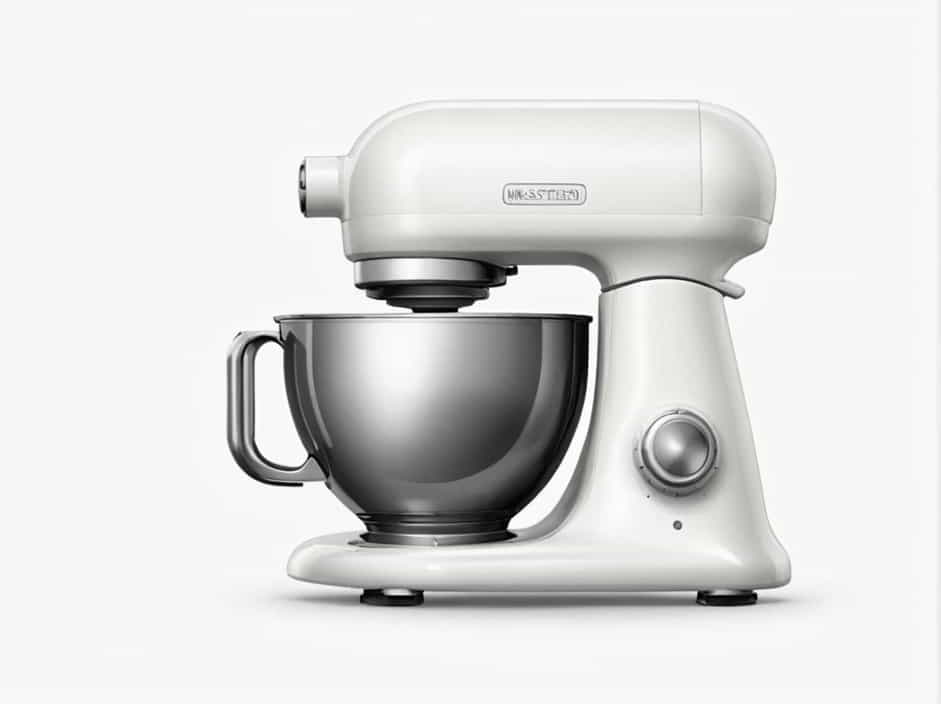Kneading dough is an essential step in baking bread, pizza, and other yeast-based recipes. Traditionally, kneading by hand can take time and effort, but using a stand mixer makes the process faster and easier.
With the right technique, a stand mixer can develop the gluten structure needed for soft, fluffy, and well-risen bread. In this guide, we’ll cover how to knead dough using a stand mixer, tips for success, common mistakes to avoid, and FAQs.
Why Use a Stand Mixer for Kneading Dough?
Using a stand mixer for kneading dough offers several benefits:
✅ Saves Time – The mixer kneads the dough in minutes, compared to manual kneading, which takes longer.
✅ Less Effort – No more tiring arm workouts from hand-kneading.
✅ Even Kneading – A stand mixer provides consistent kneading, ensuring proper gluten development.
✅ Easy to Use – Just add ingredients, turn on the mixer, and let it do the work.
Choosing the Right Stand Mixer for Kneading Dough
Not all stand mixers are built for kneading. Here are some factors to consider:
🔹 Power – A stand mixer with at least 250 watts is recommended for kneading soft dough, while a higher wattage (500W or more) is better for heavy dough.
🔹 Dough Hook Attachment – Essential for proper kneading. Avoid using a whisk or paddle.
🔹 Bowl Capacity – A 4.5-quart bowl is suitable for small batches, while a 6-quart bowl is better for larger recipes.
How to Knead Dough in a Stand Mixer
Step 1: Gather Your Ingredients
Make sure you have all the ingredients measured and ready. A basic bread dough includes:
- Flour (All-purpose or bread flour)
- Water or Milk
- Yeast (Active dry or instant yeast)
- Salt
- Sugar (Optional, for a slightly sweet dough)
- Butter or Oil (For a softer texture)
Step 2: Attach the Dough Hook
A stand mixer typically comes with different attachments. For kneading dough, always use the dough hook. It’s designed to stretch and fold the dough, mimicking hand kneading.
Step 3: Mix the Ingredients
- Add the wet ingredients (water, milk, oil, etc.) into the mixing bowl first.
- Add the dry ingredients (flour, yeast, sugar, salt) on top.
- Turn on the mixer at a low speed (speed 1 or 2) to combine the ingredients.
🚨 Tip: Never start at high speed—flour may fly everywhere!
Step 4: Knead the Dough
Once the dough comes together, increase the speed slightly (speed 2 or 3, depending on your mixer).
🔹 How long should you knead?
- Soft dough (like pizza or sandwich bread): 6-8 minutes
- Stiffer dough (like bagels or pretzels): 8-10 minutes
🔹 How to know when the dough is ready?
- Smooth and elastic – The dough should be stretchy but not sticky.
- Passes the windowpane test – Take a small piece of dough and stretch it. If it forms a thin, translucent “window” without breaking, it’s ready.
- Pulls away from the bowl – If the dough sticks too much, add a little flour (1 tablespoon at a time).
Step 5: Rest and Rise
Once kneaded, transfer the dough to a lightly greased bowl, cover it, and let it rise according to your recipe’s instructions.
Common Mistakes When Kneading Dough in a Stand Mixer
🚫 Using the Wrong Attachment – Always use the dough hook, not the paddle or whisk.
🚫 Over-Kneading the Dough – Too much kneading can make the dough too stiff, resulting in tough bread.
🚫 Adding Too Much Flour – If the dough is sticky, don’t add too much flour too quickly. Give it time to develop.
🚫 Mixing at High Speed – Keep the speed low to medium to avoid overheating the mixer.
FAQs About Kneading Dough in a Stand Mixer
1. Can I Knead All Types of Dough in a Stand Mixer?
Yes, but heavier doughs (like bagel or pretzel dough) may require a stronger mixer with higher wattage.
2. How Do I Know If I Over-Kneaded the Dough?
Over-kneaded dough becomes too tight and may tear instead of stretching. If this happens, let the dough rest longer before shaping.
3. What If My Dough Is Too Sticky?
Add small amounts of flour (1 tablespoon at a time) until it reaches the right consistency. Avoid adding too much, as this can make the bread dry.
4. Can I Double the Recipe in a Stand Mixer?
It depends on your mixer’s capacity. A standard 4.5-quart bowl can handle about 4-5 cups of flour. If doubling, use a larger bowl.
5. Do I Still Need to Hand Knead After Using the Mixer?
No, a stand mixer does all the kneading for you. However, you can hand-knead for a minute or two at the end to check the dough’s texture.
Kneading dough in a stand mixer is a time-saving and effortless way to prepare homemade bread. With the right technique, speed, and kneading time, you’ll get perfectly soft and airy bread every time.
So next time you bake, let your stand mixer do the hard work and enjoy making delicious homemade dough with ease!
